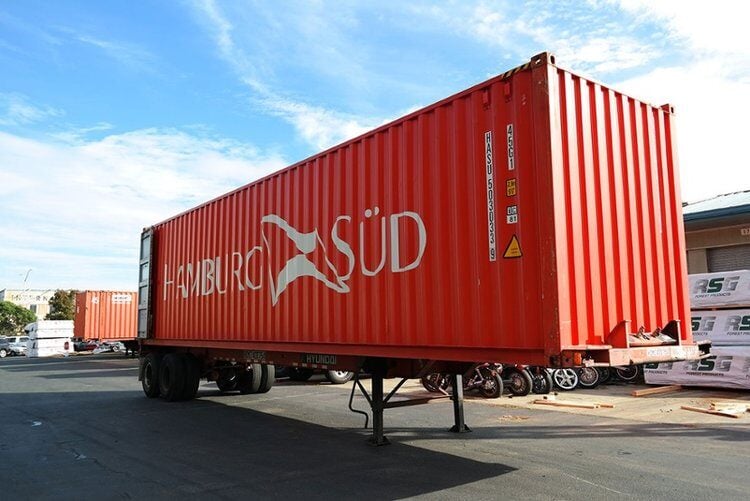Regional Muscle Car DNA: West Coast vs. East Coast vs. Southern Builds
The golden age of American muscle cars (1964–1973) wasn’t just defined by Detroit’s factories—it was shaped by regional climates, regulations, and cultural trends. From California’s smog laws to Texas’ drag strips, geography left an indelible mark on classic car configurations. This guide breaks down how West Coast, East Coast, and Southern builds differ, and why these distinctions matter for international collectors and shippers.
For global market insights, see How American Muscle Icons Dominate International Auctions.
West Coast Muscle: Smog Compliance & Custom Culture
Key Influences:
-
CARB Regulations: California’s 1966 emissions standards forced early adoption of smog pumps and EGR valves.
-
Custom Scene: Los Angeles’ hot rod culture prioritized aftermarket mods (e.g., Edelbrock intakes, Hurst shifters).
-
Dealer Networks: Pontiac GTOs shipped to Bay Area dealers often had Rally I wheels and dealer-installed Judge kits.
Example: A 1969 Camaro Z/28 sold new in San Francisco likely has:
-
AIR injection system (California-only in ’69)
-
Optional F41 suspension for canyon roads
-
Dealer-added Cragar S/S wheels
International Demand: European collectors pay 15–20% premiums for West Coast cars due to rust-free bodies and documented compliance.
East Coast Muscle: Salt Survival & NASCAR Legacy
Key Influences:
-
Winter Challenges: Northeastern dealers prioritized undercoating and vinyl tops to combat road salt.
-
NASCAR Homologation: Ford Talladegas and Mercury Cyclones built for Northeastern tracks had improved aerodynamics.
-
Dealer Specs: New York-area Dodge Chargers often included rear defrosters and heavy-duty heaters.
Example: A 1970 Plymouth Road Runner from Boston typically features:
-
Factory undercoating (90% of Northeast-sold Mopars)
-
3.23 rear gears for highway driving
-
Rare “Winter Package” with heated mirrors
Shipping Consideration: East Coast cars require thorough corrosion inspections before international transport.
Southern Muscle: Drag Strip Dominance & Heat Tuning
Key Influences:
-
Drag Racing Culture: Alabama-built Dodge Demons (1971–72) often came with factory-installed Hurst Pistol Grip shifters.
-
Climate Adaptations: Texas-sold Chevelles commonly had larger radiators and engine oil coolers.
-
Dealer Networks: Atlanta’s Yenko Chevrolet pushed COPO Camaros with 427ci engines.
Example: A 1971 Mustang Mach 1 from Houston likely includes:
-
Drag Pack option (4.11 rear end, Detroit Locker)
-
Window louvers to reduce cabin heat
-
Dealer-added Lakewood roll bars
International Demand: Middle Eastern buyers prefer Southern cars for their heat-resistant configurations, paying 25–30% premiums at UAE auctions.
Regional Builds: International Price Impact
| Region | Key Features | Top Export Markets | Premium vs. National Avg. |
|---|---|---|---|
| West Coast | Smog equipment, rust-free | EU, Japan | +15–20% |
| East Coast | Undercoating, winter packages | Canada, Scandinavia | +5–10% |
| South | Drag specs, cooling upgrades | UAE, Australia | +25–30% |
How Regional DNA Affects Shipping Strategies
1. Documentation Is Key
-
Build Sheets: Prove regional options (e.g., “Rallye Suspension” on Pittsburgh-built Trans Ams).
-
Dealer Invoices: Show port-installed accessories (common at Long Beach and Jacksonville ports).
2. Climate-Controlled Shipping
-
Southern Cars: Prioritize enclosed containers to protect sun-faded interiors.
-
East Coast Cars: Use VCI packaging to prevent residual salt corrosion during transit.
3. Market-Specific Marketing
-
EU/Japan: Highlight West Coast emissions compliance in listings.
-
Middle East: Emphasize Southern heat adaptations in auction catalogs.
For step-by-step export guidance, see Shipping American Muscle Cars Overseas: Complete Documentation Guide.
West Coast Shipping’s Regional Expertise
Our services account for geographic nuances:
-
Provenance Verification: Cross-check VINs with factory regional distribution records.
-
Customs Prep: Highlight region-specific features in EPA/DOT exemption filings.
-
Targeted Logistics: Pair Southern cars with Middle East-bound climate-controlled containers.
Case Study: A 1970 Chevelle SS from Dallas sold for $235k in Dubai—32% above comparable Midwest examples—due to documented radiator upgrades and desert-ready specs.
Conclusion
Understanding regional muscle car DNA isn’t just academic—it’s a critical factor in global valuation and shipping strategy. Whether it’s a smog-compliant California GTO or a drag-prepped Georgia Charger, geographic heritage commands real premiums in international markets.
Need Help Leveraging Regional Value?
Contact West Coast Shipping for provenance analysis and targeted global logistics.
For more on collector preferences, visit Why Gulf Collectors Pay Premium Prices.
You May Also Like
These Related Stories
.png)
Consolidated vs. Dedicated Container Shipping | West Coast Shipping

Best U.S. Ports For Shipping Vehicles To Morocco: East Vs West Coast

-093789-edited.png?width=220&height=79&name=wcs_final_logo_(1)-093789-edited.png)
